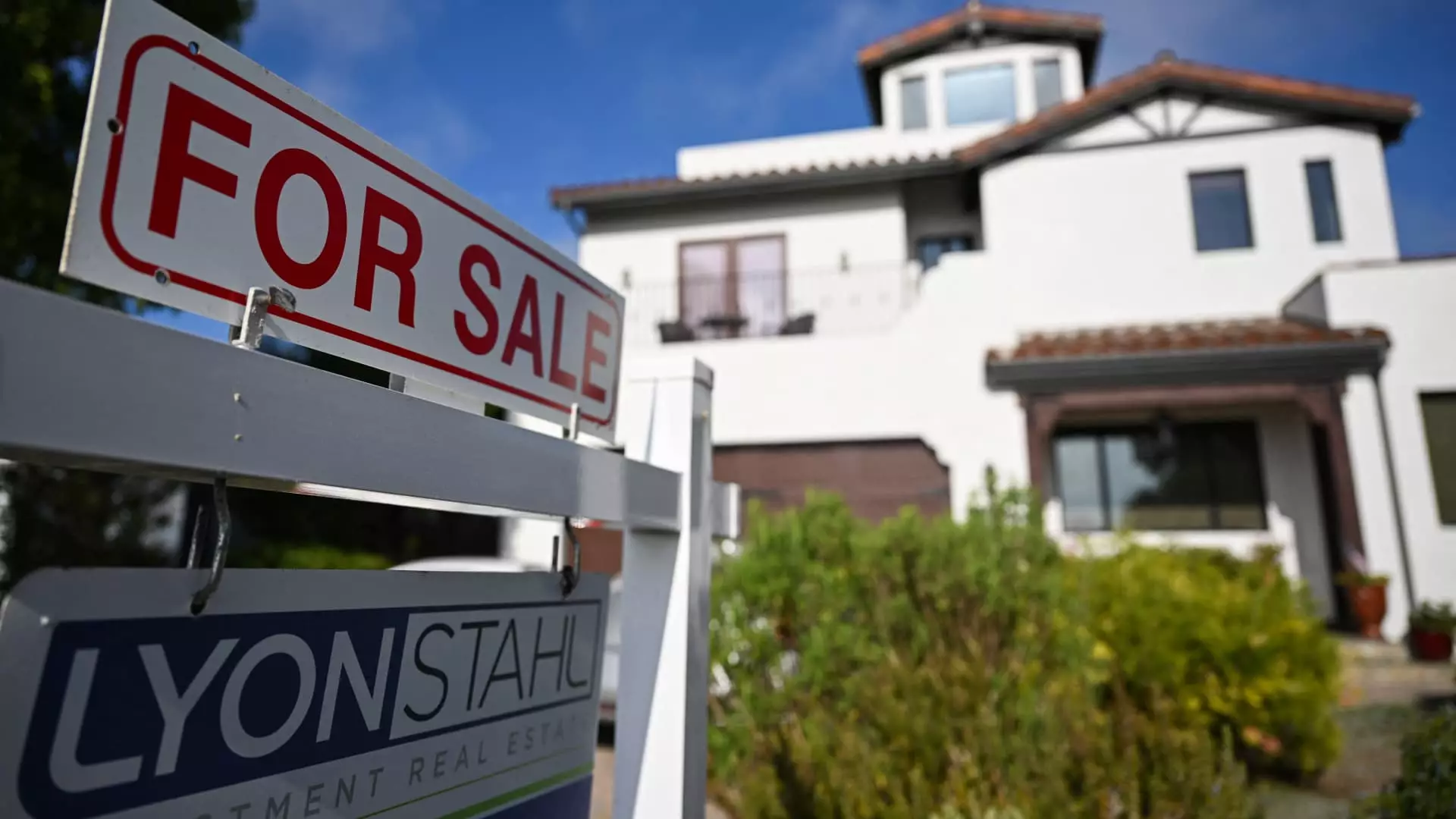In a surprising move last Thursday, mortgage rates plummeted, falling 12 basis points to 6.63%, the lowest recorded figure since October. This sudden downturn can be traced back to the Trump administration’s new tariff announcement, which shook financial markets nationwide. In the chaos that ensued, investors scrambled toward the bond market, leading to a decline in bond yields—a critical component influencing mortgage rates. The 10-year U.S. Treasury’s yield continues to play a pivotal role in dictating the fluctuating landscape of mortgage costs. As the market reacts to every twist and turn of tariff dialogue, it becomes clear that what is intended to be stabilizing instead breeds confusion.
Matthew Graham from Mortgage News Daily aptly described this tumultuous situation, saying that while some uncertainties linger regarding the details of the tariff discussions, the market has prepared itself for the inevitable repercussions on global trade. The volatility surrounding mortgage rates isn’t merely a short-term phenomenon; it heralds broader economic implications that could destabilize financial planning for countless families. As markets react to the ebb and flow of political maneuvering, homebuyers find themselves sandwiched between the hope for lower rates and the harsh reality of escalating home prices.
Home Affordability: An Unattainable Dream
Just as a glimmer of hope surfaced with dropping rates, the housing market revealed a more sinister trap: affordability is slipping further and further out of reach for the average American. According to research by Redfin, first-time buyers face staggering monthly payments that have reached an all-time high of $2,802. This reality starkly contrasts the overall drop in rates, suggesting that while the financing may seem more favorable, the underlying prices for homes continue to surge—the result of a growing number of economic challenges that unveil a painful truth: many Americans are unable to enter the housing market.
A detailed examination reveals that approximately 70% of U.S. households—an alarming 94 million people—struggle to afford a $400,000 home, given the backdrop of an estimated median price approaching $460,000 in 2025. Notably, the minimum income required to secure a $200,000 home at a 6.5% mortgage rate hovers around $61,487. Shockingly, these income thresholds illuminate a grim picture where over 52 million households cannot attain homeownership, further perpetuating the cycle of inequality in our society. This isn’t just a number; it’s the manifestation of economic policy failures that leave a significant portion of the population shut out of the very foundation of the American Dream.
The Housing Market: A Copybook Case of Imbalance
As more homes trickle onto the market, the reality becomes starkly evident: the supply is not aligning with the demand, especially on the lower-end price spectrum where it is most needed. The echoes from the housing market still reverberate from the Great Recession, where chronic underbuilding has left the landscape devoid of affordable options. Even as sellers emerge, spurred by fears of job stability or a longing to relocate closer to urban cores, the average potential homebuyer continues to confront insurmountable financial barriers.
Real estate professionals reveal that many sellers believe we have peaked in the market and are keen on cashing out while prices remain buoyant. While March data indicated a notable increase in new listings—up 10%—the reality remains sobering: homes are lingering on the market longer, and listings with price reductions are creeping upward. This dissonance suggests a market that is rebalancing itself, yet perhaps too slowly to meet the urgent needs of prospective buyers.
A Market in Decline and the Shadow of Economic Concerns
The current landscape for pending sales reveals significant declines—down 5.2% across major metropolitan areas, with some regions like Jacksonville and Miami suffering even sharper declines of 15.1% and 13.7%, respectively. This trend signals a deeper malaise within the market partly fueled by shifting migration patterns post-pandemic, and compounded by rising economic apprehensions. As Danielle Hale, chief economist for Realtor.com, pointedly observed, the high costs of entering the market coupled with emerging economic fears suggest that buyers are stepping back rather than charging ahead.
What is unfolding is more than merely a reaction to interest rates; it’s a symptom of wider economic anxieties that provoke caution in potential homebuyers. As the spring housing season unfolds, it’s clear that while rates may dip, the rising tide of home prices, compounded by stagnant wages, casts a long shadow over the market—one that highlights the deep inequities faced by the average American. The intertwining narratives of fluctuating rates and rising prices artificially inflate expectations while reality delivers a bitter aftertaste, leading to disillusionment for those just wanting a place to call home.

